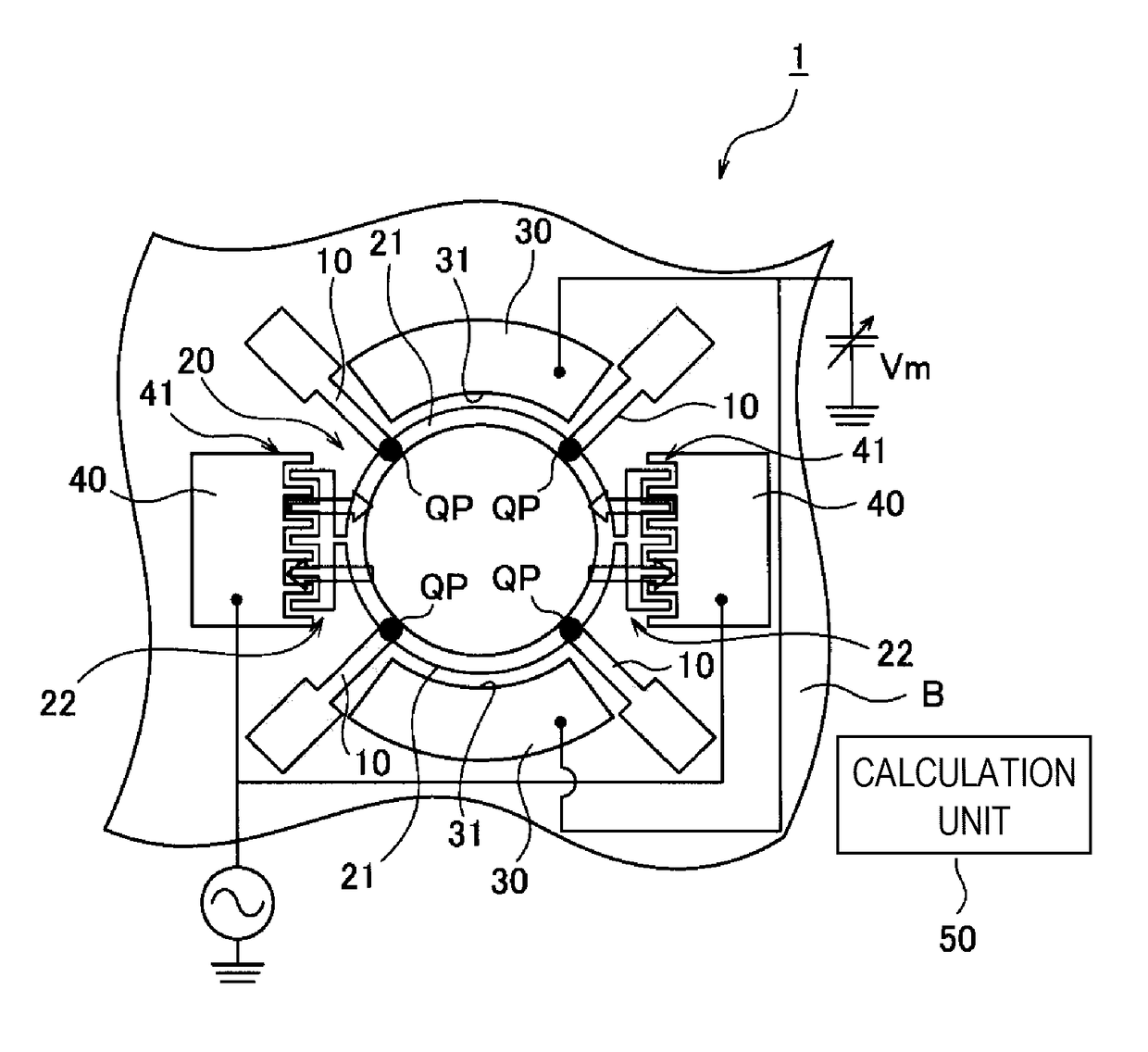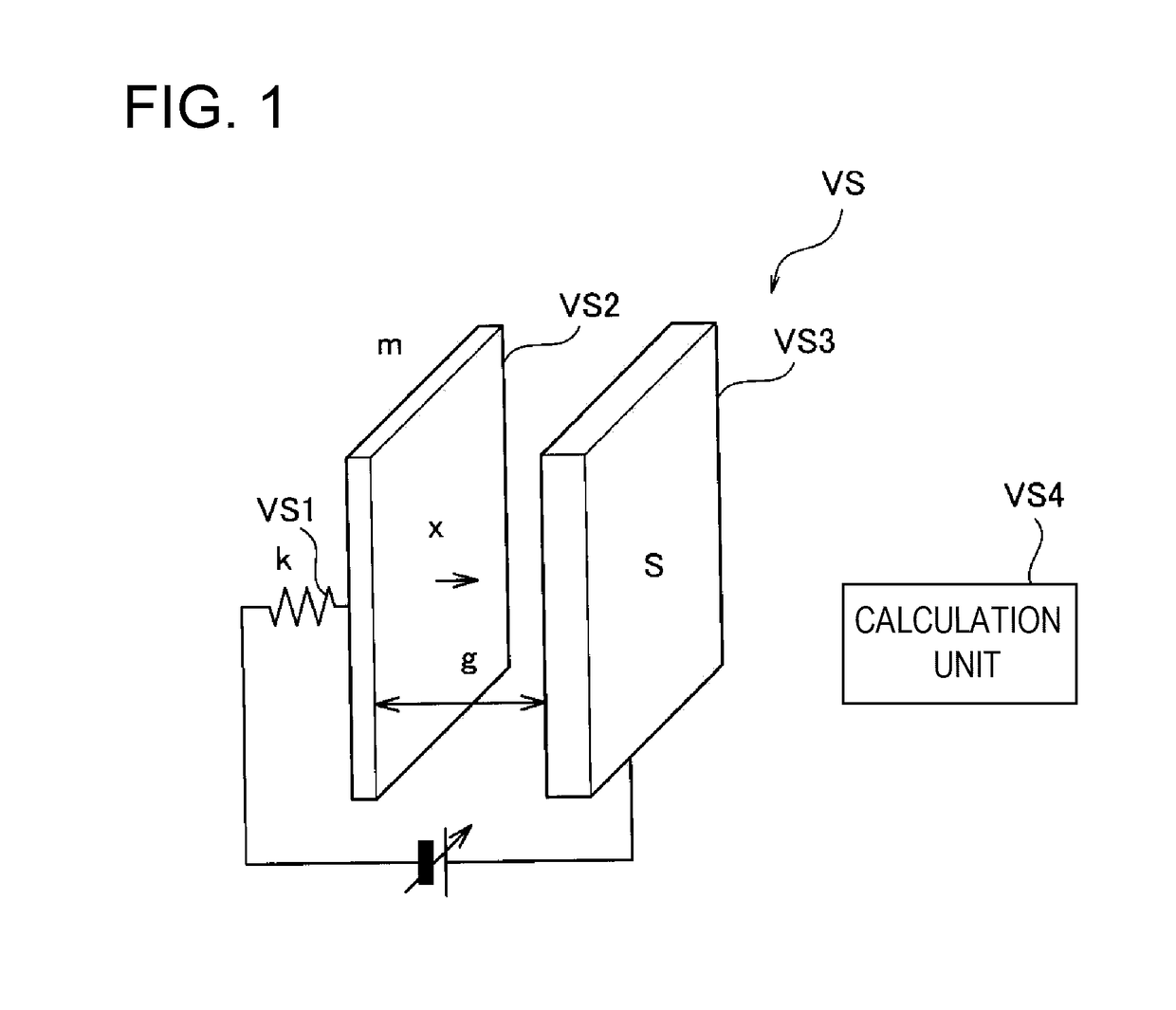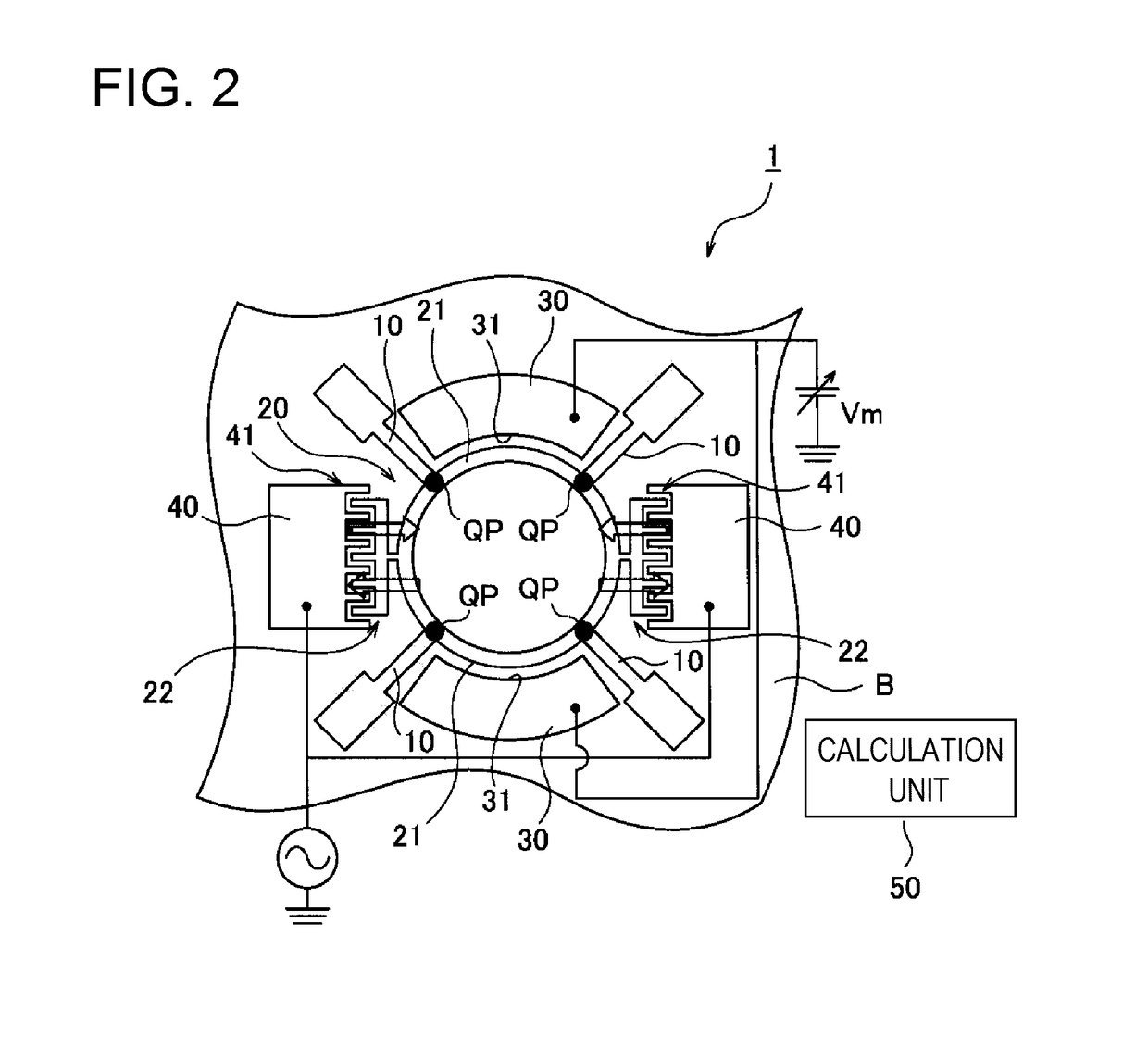Voltage sensor
a voltage sensor and voltage technology, applied in the field of voltage sensors, can solve problems such as complicated assembly, and achieve the effect of improving the accuracy of voltage measurement and measuring accuracy
- Summary
- Abstract
- Description
- Claims
- Application Information
AI Technical Summary
Benefits of technology
Problems solved by technology
Method used
Image
Examples
Embodiment Construction
[0033]A preferred embodiment of the present invention is described based on the figures as follows, but the present invention is not limited to the following embodiment.
[0034]FIG. 1 is a basic configuration diagram indicating the principle of a voltage sensor according to an embodiment of the present invention. As shown in FIG. 1, a voltage sensor VS according to the basic principle includes a mechanical suspension VS1, an oscillator VS2, a fixed electrode VS3, and a calculation unit VS4.
[0035]The suspension VS1 supports the oscillator VS2. A spring constant of this suspension VS1 is assumed as k. The oscillator VS2 is a plate electrode supported by the suspension VS1, and the oscillator VS2 is oscillateable due to elasticity of the suspension VS1. The mass of this oscillator VS2 is assumed as m.
[0036]The fixed electrode VS3 is a plate electrode which is placed to be opposed to the oscillator VS2 with a gap, and has the relation of parallel plate electrodes with the oscillator VS2. ...
PUM
 Login to View More
Login to View More Abstract
Description
Claims
Application Information
 Login to View More
Login to View More - R&D
- Intellectual Property
- Life Sciences
- Materials
- Tech Scout
- Unparalleled Data Quality
- Higher Quality Content
- 60% Fewer Hallucinations
Browse by: Latest US Patents, China's latest patents, Technical Efficacy Thesaurus, Application Domain, Technology Topic, Popular Technical Reports.
© 2025 PatSnap. All rights reserved.Legal|Privacy policy|Modern Slavery Act Transparency Statement|Sitemap|About US| Contact US: help@patsnap.com



